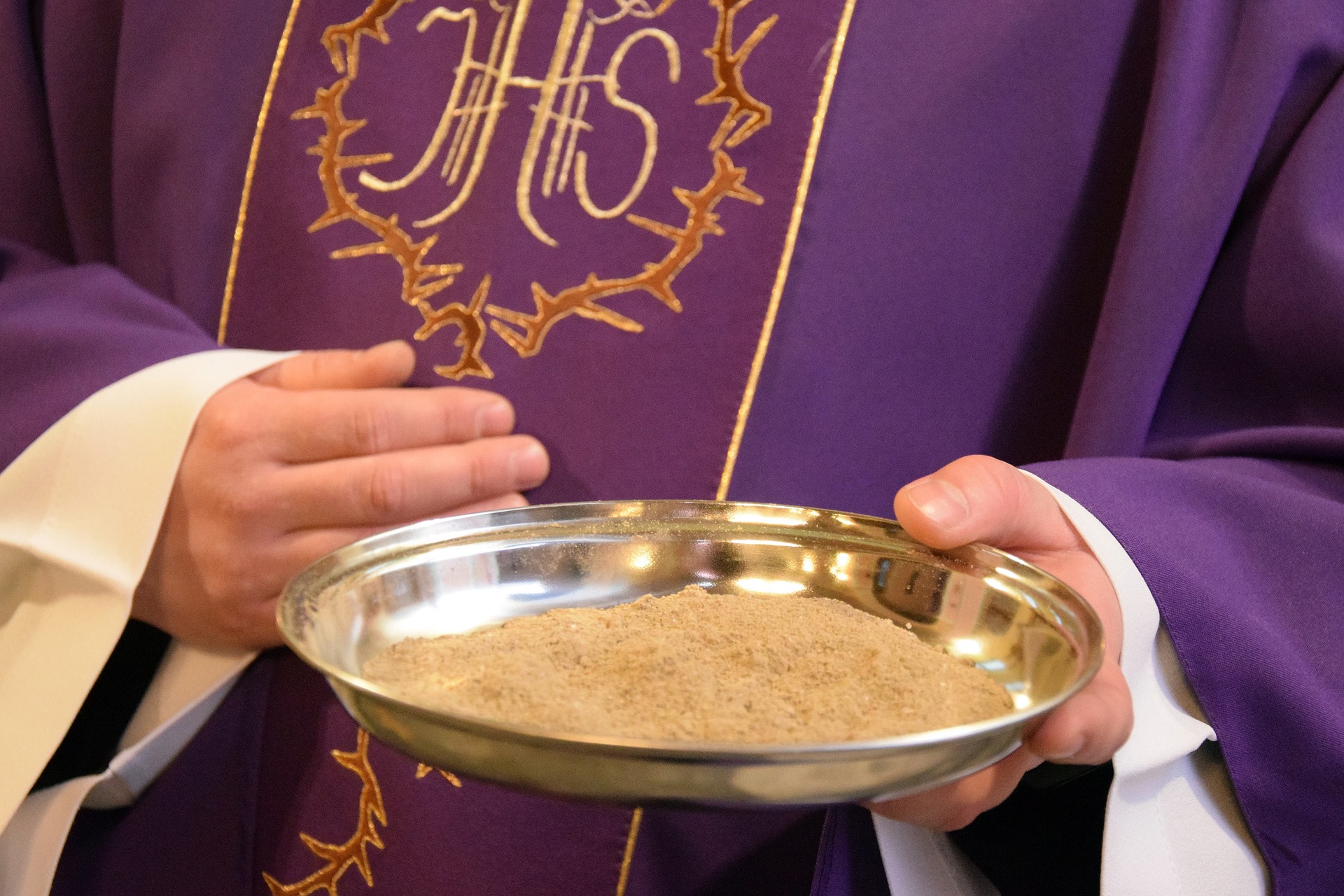Ash Wednesday, which falls on 5 March 2025, marks the beginning of the Church’s Lenten season.
The meaning of ashes
But the quotation from the missal also points to another custom of this day, the ash rite. In ancient times, ashes were a sign of transience, a detergent, and the basis for making soap. Thus, the ashes are, at the same time, a symbol of mourning and purification.
On Ash Wednesday, public penitents wore a penitential robe sprinkled with ashes in the Middle Ages. Afterwards, in memory of the biblical expulsion from paradise, they were expelled from the place of worship. This custom was especially widespread in Gaul.
At the Synod of Benevento in 1091, Pope Urban II prescribed the rite of ashes for all believers. Men had such sprinkled on their heads; women drew a cross of ashes on their foreheads. Since the 11th century, there has been a special prayer for the blessing of ashes.
The custom of obtaining ashes from the burned palm branches of the previous year originated in the twelfth century. “Remember, man, that you are dust and will return to dust” or “Convert and believe in the Gospel” are the phrases from the missal spoken by the priest when the ashes cross is placed on Ash Wednesday.
Covering the altarpiece with a lenten cloth
The custom of covering the altarpiece with a lenten cloth on Ash Wednesday is 1,000 years old. With their biblical sequence of images, the Lenten fabrics are supposed to get people in the mood for Easter. Over half of the Lenten cloths preserved throughout Austria are in Carinthian parishes. The oldest Lenten cloth dates back to 1458 in Gurk Cathedral and is the largest in Austria.
The first Sunday of Lent marks the beginning of the 40-day penitential season in preparation for Easter, the highest feast in the church year. In the second century, which was still limited to a two-day mourning fast, it was already a firm custom in the fourth century to prepare for the high feast of Easter for 40 days. This time measure is derived from the Bible, especially from the 40-day period of prayer and fasting that Jesus Christ took upon himself in the desert after his baptism in the Jordan River. Because there was no fasting on Sundays in the past, they are not included in counting the 40 days even today.
- source: hp/picture: Bild von Grzegorz Krupa auf Pixabay
This post has already been read 9685 times!



